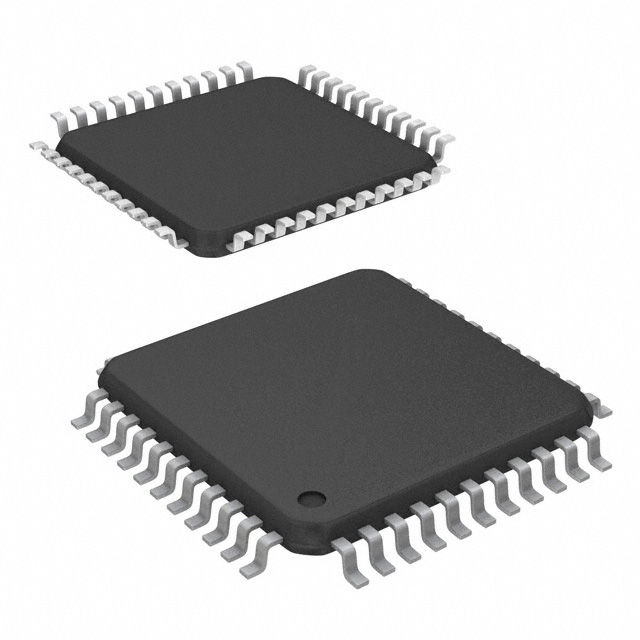Consulte las especificaciones para obtener detalles del producto.

ATMEGA164P-A15AZ
Product Overview
The ATMEGA164P-A15AZ belongs to the category of microcontrollers and is widely used in various electronic applications. This microcontroller is known for its versatile characteristics, compact package, and essential features that make it suitable for a wide range of applications. It is available in specific packaging and quantities to meet different project requirements.
Category
Microcontroller
Use
The ATMEGA164P-A15AZ is used for controlling and processing tasks in electronic devices and systems. It serves as the brain of many embedded systems, providing computational capabilities and interfacing with other hardware components.
Characteristics
- Versatile
- Compact
- Efficient
- Low power consumption
Package
The ATMEGA164P-A15AZ is typically available in a compact package suitable for surface mount technology (SMT) applications.
Essence
This microcontroller is essential for enabling intelligent control and automation in electronic devices and systems.
Packaging/Quantity
It is commonly available in tape and reel packaging with varying quantities to accommodate different production needs.
Specifications
- Architecture: 8-bit AVR
- Flash Memory: 16KB
- SRAM: 1KB
- EEPROM: 512 bytes
- Operating Voltage: 1.8V to 5.5V
- Digital I/O Pins: 32
- Analog Input Pins: 8
- Communication Interfaces: UART, SPI, I2C
- Clock Speed: Up to 20MHz
Detailed Pin Configuration
The ATMEGA164P-A15AZ features a specific pin configuration that includes digital I/O pins, analog input pins, power supply pins, communication interface pins, and other essential connections. The detailed pinout can be found in the official datasheet provided by the manufacturer.
Functional Features
- High-Performance CPU: The microcontroller features a high-performance CPU capable of executing complex tasks efficiently.
- Peripheral Integration: It integrates various peripherals such as timers, counters, and communication interfaces for enhanced functionality.
- Low Power Consumption: Designed for low power operation, making it suitable for battery-powered applications.
- Flexible I/O Configuration: The device offers flexible I/O configurations to accommodate diverse interfacing requirements.
Advantages and Disadvantages
Advantages
- Versatile application possibilities
- Compact form factor
- Low power consumption
- Rich peripheral integration
Disadvantages
- Limited memory compared to higher-end microcontrollers
- Restricted processing power for intensive applications
Working Principles
The ATMEGA164P-A15AZ operates based on the principles of embedded computing, where it executes programmed instructions to control and manage various functions within an electronic system. It interacts with external components and sensors to process data and perform desired operations.
Detailed Application Field Plans
The ATMEGA164P-A15AZ finds extensive use in the following application fields: - Embedded Systems: Used in various embedded systems including consumer electronics, industrial automation, and IoT devices. - Automotive Electronics: Employed in automotive control systems for managing vehicle functions and subsystems. - Smart Home Devices: Integrated into smart home appliances and devices for intelligent control and connectivity. - Industrial Control: Utilized in industrial control and monitoring systems for process automation and data acquisition.
Detailed and Complete Alternative Models
- ATMEGA328P: A popular alternative with similar features and compatibility.
- ATMEGA32U4: Offers additional USB interface capabilities for specific applications.
- PIC16F877A: An alternative microcontroller from a different manufacturer with comparable specifications.
In conclusion, the ATMEGA164P-A15AZ microcontroller offers a balance of performance, versatility, and compactness, making it suitable for a wide range of electronic applications. Its specifications, functional features, and application field plans demonstrate its significance in the realm of embedded systems and electronic control.
Enumere 10 preguntas y respuestas comunes relacionadas con la aplicación de ATMEGA164P-A15AZ en soluciones técnicas
What is the ATMEGA164P-A15AZ microcontroller used for?
- The ATMEGA164P-A15AZ microcontroller is commonly used in technical solutions for embedded systems, IoT devices, and various electronic control applications.
What are the key features of the ATMEGA164P-A15AZ?
- The ATMEGA164P-A15AZ features 16KB of flash memory, 1KB of EEPROM, 512B of SRAM, 32 general-purpose I/O pins, and a wide range of communication interfaces such as SPI, I2C, and UART.
How do I program the ATMEGA164P-A15AZ microcontroller?
- The ATMEGA164P-A15AZ can be programmed using popular development environments such as Atmel Studio, MPLAB X IDE, or Arduino IDE with appropriate hardware tools like AVRISP mkII, USBasp, or Arduino boards.
What voltage levels does the ATMEGA164P-A15AZ support?
- The ATMEGA164P-A15AZ operates at a voltage range of 1.8V to 5.5V, making it suitable for a wide variety of power supply configurations.
Can the ATMEGA164P-A15AZ be used for low-power applications?
- Yes, the ATMEGA164P-A15AZ offers low-power consumption modes and features, making it suitable for battery-powered and energy-efficient designs.
What kind of peripherals can be interfaced with the ATMEGA164P-A15AZ?
- The ATMEGA164P-A15AZ supports interfacing with various peripherals including sensors, displays, motors, communication modules, and other external devices through its GPIO pins and communication interfaces.
Is the ATMEGA164P-A15AZ suitable for real-time applications?
- Yes, the ATMEGA164P-A15AZ can be used in real-time applications with proper consideration of timing constraints and interrupt handling.
What are the available development tools and resources for the ATMEGA164P-A15AZ?
- Development tools such as datasheets, application notes, reference designs, and evaluation kits are available from the manufacturer and third-party sources to aid in the design and development process.
Can the ATMEGA164P-A15AZ be used in industrial applications?
- Yes, the ATMEGA164P-A15AZ is suitable for industrial applications due to its robustness, reliability, and compatibility with industrial communication protocols.
Are there any known limitations or common issues when using the ATMEGA164P-A15AZ?
- While the ATMEGA164P-A15AZ is a versatile microcontroller, designers should be aware of its specific limitations such as maximum clock frequency, I/O pin current capabilities, and memory constraints when planning their technical solutions.

